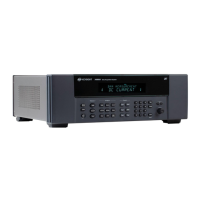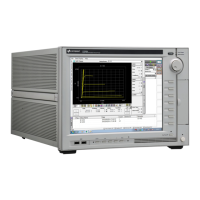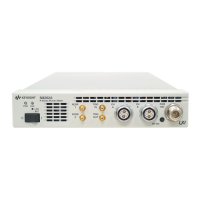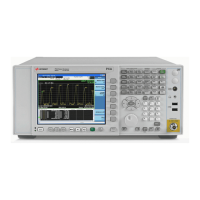3 Calibration Procedures
38 Keysight 34980A Service Guide
Performance Verification Tests
Use the Performance verification Tests to verify the measurement performance of
the instrument. The performance verification tests use the instrument’s
specifications listed in Chapter 2 Specifications in this manual.
You can perform four different levels of performance verification tests:
– Self-Test A series of internal verification tests that give a high confidence that
the instrument is operational.
– Quick Verification A combination of the internal self-tests and selected
verification tests.
– Performance Verification Tests An extensive set of tests that are
recommended as an acceptance test when you first receive the instrument or
after performing adjustments.
– Optional Verification Tests Tests not performed with every calibration.
Perform these tests to verify additional specifications or functions of the
instrument.
Self-Test
A brief power-on self-test occurs automatically whenever you turn on the
instrument. This limited test assures that the instrument is capable of operation
and also checks the plug-in modules for basic operation.
– During the self-test all display segments and annunciators are lit.
– If the self-test fails, the ERROR annunciator turns on. Read any errors using
the front panel View menu, or use the SYSTem:ERRor? command query from
the remote interface. If repair is required, contact an Keysight Service Center.
– If all tests pass, you have a high confidence (
~
90%) that the instrument is
operational.
– You can initiate a more complete self test by sending the *TST? command to
the instrument. This command returns a “+0” if all the self-tests pass, or a “+1”
if a failure occurred. Depending upon the number and type of modules
installed, this command may take up to 2½ minutes to complete. You may
need to set an appropriate interface time-out value.

